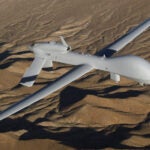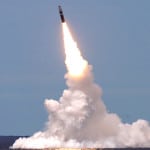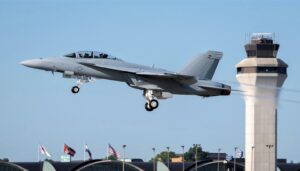The loss of Air France Flight 447, which disappeared over the South Atlantic on June 1 during a nasty lightning storm, taking 228 lives, will continue to baffle aviation safety investigators until the Airbus A330's flight data and cockpit voice recorders are hopefully recovered from the depths of the Atlantic Ocean. At week's end, wreckage of the downed jetliner, and the so-called 'black boxes', remained elusive. The Brazilian Air Force had spotted debris in the vast ocean at midweek, but…
Contract Updates
Aerojet Rocketdyne Coleman Aerospace Inc. a wholly owned subsidiary of Aerojet Rocketdyne Inc. (Orlando, Florida) – $10,333,902
Aerojet Rocketdyne, Coleman Aerospace Inc., a wholly owned subsidiary of Aerojet Rocketdyne Inc., Orlando, Florida, is being awarded a $10,333,902 modification (P00258) to exercise an option to a previously awarded contract (HQ1047-14-C-0001) to increase calendar year 2026 program management office…
The Bell Boeing Joint Project Office (California, Maryland) – $262,069,451
The Bell Boeing Joint Project Office, California, Maryland, has been awarded a maximum $262,069,451 fixed-price-incentive, performance-based contract for V-22 Phase II consumable market basket items. This was a sole-source acquisition using justification 10 U.S. Code 3204 (a)(1), as stated in…
Northrop Grumman Systems Corp. (Oklahoma City, Oklahoma) – $264,867,008
Northrop Grumman Systems Corp., Oklahoma City, Oklahoma, has been awarded an estimated $264,867,008 modification to award a hybrid firm-fixed-price and cost-plus-fixed-fee delivery order (SPRTA1-26-F-0020) against a five-year indefinite-delivery/indefinite-quantity contract (SPRTA1-19-D-0001) for B-2 rudders. This was a sole-source acquisition using justification…
General Dynamics Land Systems Inc. (Sterling Heights, Michigan) – $11,146,013
General Dynamics Land Systems Inc., Sterling Heights, Michigan, was awarded an $11,146,013 modification (P00122) to contract W56HZV-22-C-0012 to exercise option hours for Abrams system technical support. Work will be performed in Sterling Heights, Michigan, with an estimated completion date of…













